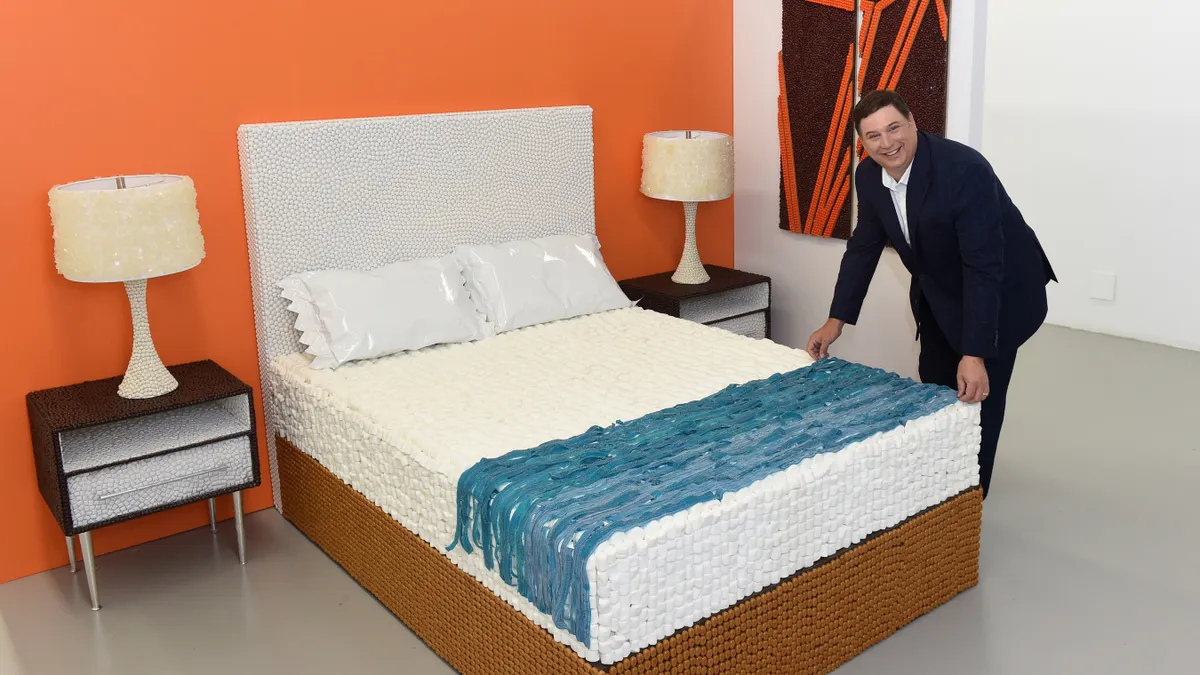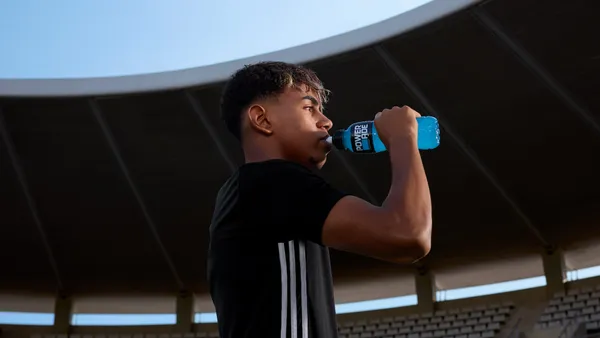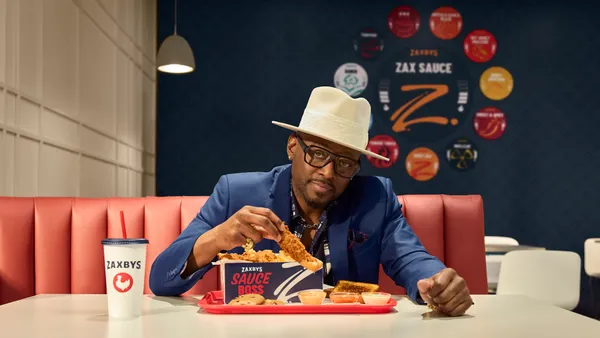Dive Brief:
- Howard Johnson by Wyndham created an Instagrammable all-candy hotel room for an experiential event that shows off the brand's first design update in more than 25 years, according to an announcement shared with Marketing Dive. "HoJo's Sweet Escape" runs Aug. 22-23 in New York, giving visitors a taste of the budget hotel brand's $40 million renovation of more than 200 hotels in the U.S. and Canada.
- The hotel brand took over a location in Manhattan's Tribeca neighborhood and installed more than 450 pounds of candy, including 80,000 M&Ms and 4,125 feet of sour tape, for the hotel room made entirely of candy. The interior has lollipop-themed wallpaper, jelly beans, licorice and a swimming pool filled with more than 30,000 faux marshmallows, where visitors can play and snap photos.
- Howard Johnson's updated guest rooms aim to add a contemporary flair to the brand's mid-20th-century design and signature color scheme, while emphasizing the chain's modern amenities like with free Wi-Fi. More than 70% of its locations have started or completed the renovations, with the rest expected to wrap up by next summer, per the announcement.
Dive Insight:
Howard Johnson's experiential pop-up around a candy-constructed hotel room aims to introduce the brand to a younger generation while stirring nostalgic feelings among people who remember family vacations at its hotels. Howard Johnson's once boasted one of the biggest restaurant chains in the U.S., with signature offerings like 28 flavors of ice cream, but failed to keep pace with changing American tastes and mostly disappeared by the turn of the millennium.
To avoid the same fate, the hotel company is working to make an impression on younger travelers who are typically receptive to experiential events where they can interact with a brand in person.
In creating a pop-up hotel room, Howard Johnson has combined several marketing tactics that tend to resonate with young adults, including a focus on authentic experiences that can be shared on social media. More than three-fourths (76%) of millennials said they had shared an image of a hotel – including its bar, pool, restaurant or bedroom – on social media, per a survey of people ages 18 to 34. More than four out of five (83%) young adults said they booked a hotel because they saw images from someone they follow on social media, pointing to the need for hotel brands to have a strong online presence. Almost three-fourths (73%) of millennials check a hotel's social channels before booking, and 33% reported being dissuaded from booking if it had no social presence.
Hotel chains like Howard Johnson also face a growing threat from Airbnb, the room-sharing giant that has parlayed growth in the experience economy to expand its market share. U.S. consumers spent more on the room-sharing platform than at Hilton and its subsidiary brands like DoubleTree and Embassy Suites last year, according to researcher Second Measure. By marketing the chain's design refresh after 25 years with a candy hotel room stunt, Howard Johnson appears to be targeting younger consumers who favor pop-ups and experiential events as it competes with digital disruptors like Airbnb.
Other hotel chains also have revamped their properties to appeal to experience-seeking millennials. Aloft Hotels, Marriott International's hotel brand for music fans and tech-savvy travelers, this month added interactive art experiences that change during live concerts at its properties. Kimpton Hotels & Restaurants this year expanded its interactive Room 301 experience into the Kimpton Stay Human Project to give guests a chance to have "Instagrammable" moments to share on social media. Fast food chain Taco Bell also got into experiential branding with the limited-time opening of a hotel property in Palm Springs, California.













